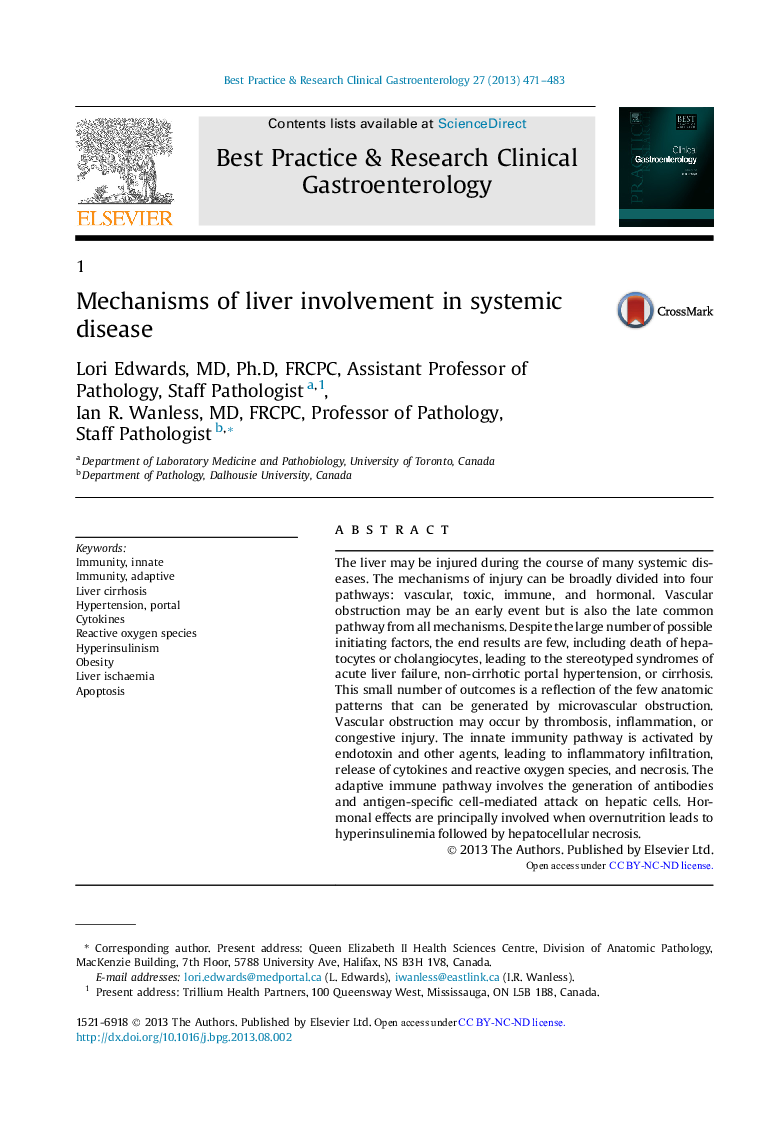| Article ID | Journal | Published Year | Pages | File Type |
|---|---|---|---|---|
| 6086402 | Best Practice & Research Clinical Gastroenterology | 2013 | 13 Pages |
The liver may be injured during the course of many systemic diseases. The mechanisms of injury can be broadly divided into four pathways: vascular, toxic, immune, and hormonal. Vascular obstruction may be an early event but is also the late common pathway from all mechanisms. Despite the large number of possible initiating factors, the end results are few, including death of hepatocytes or cholangiocytes, leading to the stereotyped syndromes of acute liver failure, non-cirrhotic portal hypertension, or cirrhosis. This small number of outcomes is a reflection of the few anatomic patterns that can be generated by microvascular obstruction. Vascular obstruction may occur by thrombosis, inflammation, or congestive injury. The innate immunity pathway is activated by endotoxin and other agents, leading to inflammatory infiltration, release of cytokines and reactive oxygen species, and necrosis. The adaptive immune pathway involves the generation of antibodies and antigen-specific cell-mediated attack on hepatic cells. Hormonal effects are principally involved when overnutrition leads to hyperinsulinemia followed by hepatocellular necrosis.
